
Branching Path: Eternights misunderstands what makes Persona's game loop compelling
Video game inspirations from other games can be a double-edged sword during development, I imagine. Trying to identify and integrate the aspects of what made a game special to strengthen your own project must be harrowing. The RPG genre is conducive to this process because RPGs are defined and produced by so many building blocks - story, characters, battles, progression systems, music, and the list goes on.
Eternights is a dating-sim action game largely developed by Jae Hyun Yoo, the founder and owner of Studio Sai. In an interview with Future Games Show, Yoo stated the following:
In 2019, I was working on a very early prototype of Eternights. During that moment, one of my friends recommended me Persona 5 which turned out to be a 120-hour game, but I was very shocked at how good it mixed a character story into a gaming format.
My passion — my ambition — is that I always wanted to do a character driven story game, so Persona 5 gave me a good inspiration to explore more on this sort of experiences, which eventually gave me courage to quit my full-time job. Eternights is my, and Studio Sai’s, first game; it is the first official long game I made and I’ve learned a ton of stuff on how these things work together, as well as what I want to do for my next move.
So, developing Eternights gave me valuable lessons that I can’t wait to apply to my next game. I made Eternights because I wanted to play a game like Eternights.
If you’ve seen Eternights before, the resemblances to Persona aren’t a coincidence. As a new game studio and Yoo as its only full-time developer, Studio Sai sure picked one hell of a game as its primary inspiration.
I think this fixation to Persona is not the ultimate undoing of Eternights, but it is one of many aspects that makes it a flawed game. Eternights tries to tell an earnest story amidst apocalyptic circumstances, yet its attempt in light-hearted moments surface the amateur scriptwriting that led to jarring tonal inconsistencies.
This is further bogged down by repetitive battles, poor environmental design, and terrible audio mixing. Eternights isn’t a good game and after finishing my 11-hour playthrough, I was just glad to be done with it - which is a bit of a bummer, because it has a promising start.

You take the role of a total nobody of a protagonist that’s been roped into checking out dating apps with your best friend, Chani. A mysterious woman texts you to meet with her and on your way to meet your blind date, an explosion in the city occurs.
Humans are spontaneously turning into zombies and monsters, due to a catastrophic simultaneous leak of containers housing the new, supposed “anti-aging” Eternights drug in development across the globe. A gigantic wall forms around the city that’s preventing anyone from escaping.
The protagonist reunites with Chani in a shelter. Several days later, you and him find the courage to step outside to see if there are any other survivors. Moments later, the protagonist bumps into Yuna, a popular idol, and her friend that’s killed off shortly after. Eventually, the three of you find a remote-controlled drone with someone promising to lead you to safety.
Right as you’re about to exit the train station, another enigmatic character shows up to restrain everyone. She slices the main character’s right arm off; of course, your story doesn’t end there.
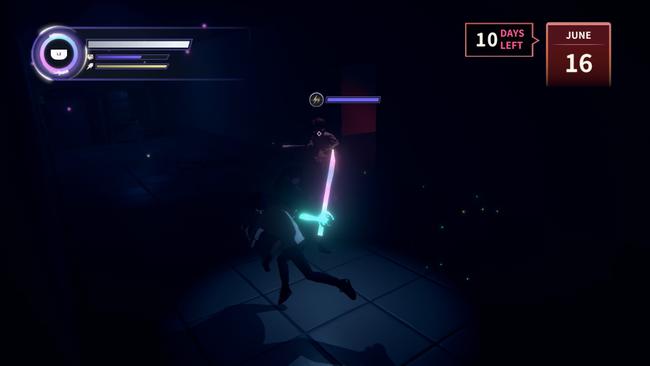
As his imminent death approaches, the protagonist finally meets his blind date - a deity named Lux. She vows to grant the protagonist her power if you do as she asks. Lux replaces the main character’s arm with one that’s made of her energy. He can transform it into different weapons. The ones you’ll be seeing the most often are a sword and greatsword for light and heavy attack strings respectively.
After this initial introduction in the first hour, your main goal becomes clear when the remote-controlled drone leads your band of survivors into a train. In order to stop the apocalypse, the train will gradually travel down a path towards a lab where Lux’s enemy, Umbra, resides. Go there, thwart Umbra's plans, and save the world.
The main obstacles in the train’s path to the lab are two of those enormous walls that players must find a way through. There are story dungeons associated with each of them that have to be completed by a set date or it’s game over. Yes, they are basically Persona 5’s Palaces; you can decide to tackle them throughout multiple days as you gradually unlock fast travel points the further you travel, or you can complete the entire dungeon all in one in-game day.
If you decide to get it done early, you’ll have free time to do other activities because plot developments will still make you wait till the “due date” of the task - like in Persona 5. When you’re not out and about fighting enemies through a story dungeon or a side story event, you’ll mostly be inside your base of operations, the train. In your spare time, you can choose to level up relationship ranks, increase stats, or collect essences to power up your abilities.
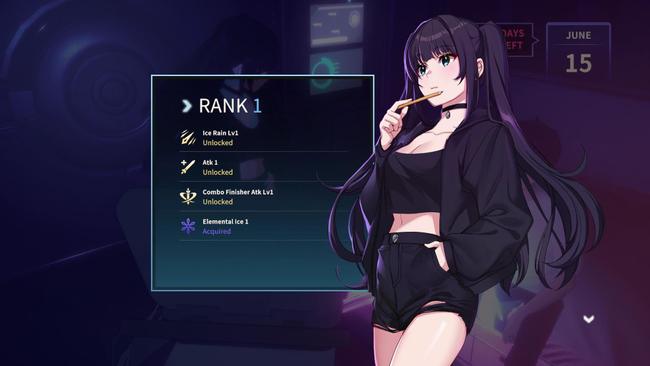
Through this, it’s easy to see that Studio Sai is aiming to recreate a much tighter and understandably smaller-scoped version of the modern Persona game loop. Some character interactions and scenes are interspersed throughout a lot of its in-game days to keep things lively.
Now, all of this premise setup may seem intriguing to you too. I know I was interested. The banter between Lux and the protagonist was charming enough to give me hope that the game would continue to strike a fine balance between humor and tension.
I looked forward to seeing how Studio Sai would further flesh out the Eternights cast. When it comes to shedding light on characters’ backstories of contextualizing their lives before the apocalypse hit, they do a decent job providing a foundation of why each character acts the way that they do. These heartfelt stories focusing on the relationships with the friends they had are perhaps the strongest elements in the game’s character writing, but much of the moment-to-moment interactions in the present day were relatively juvenile.
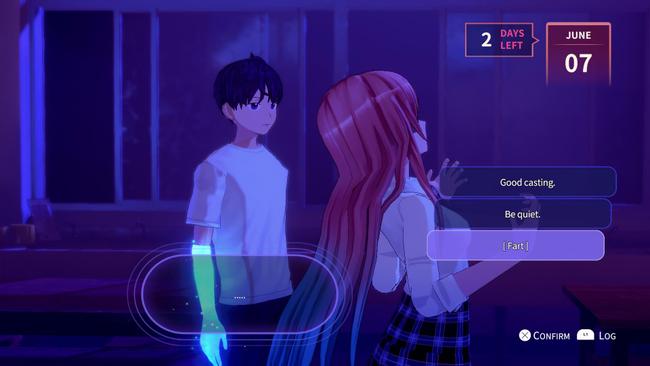
To illustrate a small sample of what I mean, I’ll describe three small segments that contain very minor spoilers that do not pertain to the overall plot.
At the end of the first story dungeon, the environment starts to collapse around the protagonist, Chani, and Yuna. They’re running for their lives and reach a bridge that happened to break down too fast before they could make it across. As they’re falling down, they’re all panicking over how to land safely.
Your character flashbacks to an important recent event… the time he entered Yuna’s room in the train without knocking. He saw her half-naked with her bra on, so he arrives at the solution to save everyone’s lives - transforming his arm into a parachute of her bra.
Another later situation is all too familiar with anime fans; those that put at least an hour into the first Trails of Cold Steel will recall this iconic moment as well. You meet the other two girls that the protagonist can pursue a relationship with, Sia and Min. They enter the story not too far from one another, but the initial encounter with Min involves the main character and her suddenly falling through a cracked floor.
Now, Studio Sai aims to subvert expectations here. People are used to the typical trope of two characters from the opposite sex landing and whoops, the guy has somehow landed in a way where one of his hands just happens to be grasping one of the girl’s breasts.
Eternights, on the other hand, aims to be one step ahead here - and does the opposite. Min and your main character land in a way that has Min palming his entire crotch. She doesn’t even take it off immediately; both you and her awkwardly comment on it for a while without her taking her hands off. Min is even blushing and commenting that’s not what she meant to do, yet still keeps her hand on your crotch anyway.
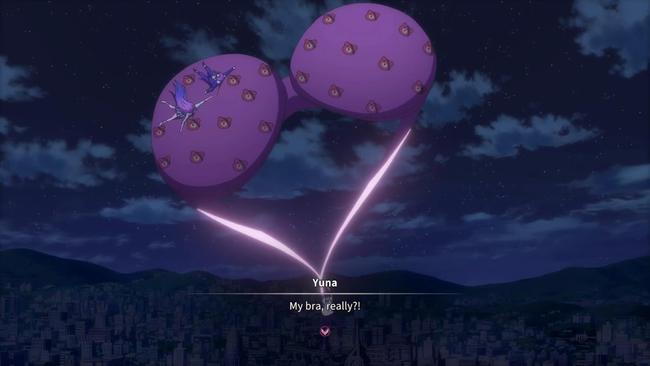
The final example I’ll give is a small event scene that happens on the train not long after Sia and Min join the crew. Sia is the science person and loves to study the protagonist because his body has been altered by Lux.
One day, she discovers that the main character’s saliva has potent cleansing properties; it’s similar to a cleaning spray of some sort. Min is also in Sia’s makeshift lab and all of a sudden, her clumsy nature has made her fall and she gets a deadly chemical on her. If there’s nothing that can clean it off immediately, she will face mortal peril.
You know where this is going. Sia hurriedly urges our hero to spit on Min to clean off the chemical. You’re even given a choice on how you want to spit on Min as you begin your spitting assault to save her life. Do you merely want to spit on her or do you want to spit on her harder? How badly do you want to save her?
There’s just a stark contrast in its tone that causes a weird split in framing what type of story it wants to tell. Humanity is seemingly on the brink of extinction and practicality the entire cast is understandably traumatized by what’s been transpiring. It doesn’t help that the protagonist has an audio clip for some responses that consists of a creepy chuckle, as well.
I’m willing to buy some level of tomfoolery so the cast isn’t eternally in despair, though the way it’s handled and portrayed in Eternights comes off as too childish and amateurishly written. Don’t get me wrong, Persona is no saint in this regard. Nevertheless, this is a feature that is focusing on what Eternights does well and doesn’t do well, not Persona.

An aspect of Eternights that significantly diverges from its Persona inspirations is in its combat system. Battles are all in real-time and you only play as the main character. Aside from your light and heavy attack strings, a circular gauge will fill as you land attacks. When full, players can fire off an Elemental Fist attack that either you, or one of your party members, will cast a magical spell that’s attuned to one of four elements - fire, ice, thunder, or dark. You’ll be constantly targeting each of their elemental weaknesses; fire and ice & thunder and dark oppose one another.
Hitting a target’s weakness will not only do more damage, but it also triggers a QTE sequence that allows players to get a few additional hits in. More importantly, bosses and elite-type foes can’t be even damaged until a player breaks all of their shields, so they’ll have to continually fill up the Elemental Fist gauge till all of their shields break. You’ll eventually do less reps once you substantially level up each girl’s relationship rank because they’ll begin to fire off multiple casts consecutively per Elemental Fist.
Still, this is pretty much the basic loop of combat - do attacks until you fill up a meter to fire off a spell. There are several sword skills to speed up the rate of taking enemies out. Each party member has a handful of supplementary abilities to further aid the main character such as healing, summoning barriers, and damaging nearby foes. If you’re able to keep up enough pressure to fill up the red bar underneath enemies, you can trigger a Deathblow to gain a lot of Elemental Fist meter.
Another vital part of battles is the perfect dodge mechanic. Incoming attacks will show a brief visual flash and make a small beep sound. Dodging at the correct time will slow down for players to unleash a few attacks safely. It’s an opportune time to trigger a light or heavy attack string’s finisher to charge up the Elemental Fist gauge more.
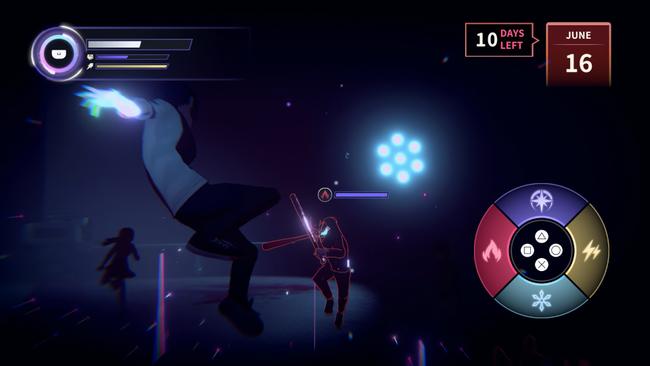
The flow of combat never really evolves in a meaningful manner. I rinse and repeat perfect dodging to charge up as much Elemental Fist meter as I can. Then, do the corresponding Elemental Fist attack while doing the occasional sword skill. That’s pretty much it.
Initiating QTE sequences to break shield barriers are hilarious though. Your arm will either turn into a hammer, chainsaw, or even stays as a fist; then, the main character will just run up and wildly go ham on an enemy to break it. The camera shakes more and more violently as you mash the QTE. It looks ridiculously stupid in an amusing way.
At its core, Eternights is an action game that contains only a few RPG elements. While your character doesn’t level up, raising his relationship rank with others unlocks new nodes in their skill trees to improve his stats.
An activity players can partake in is accompanying another character to scavenge for an item they’re looking for at night. This is fairly simplistic - a character tells you of a specific thing they’re looking for and that item is located in one of three locations. You commit to exploring one location per night of scavenging, so it’s entirely possible to choose the wrong place that doesn’t contain the requested item. Each spot always has the same items at the same location, so there’s no random element when scavenging.
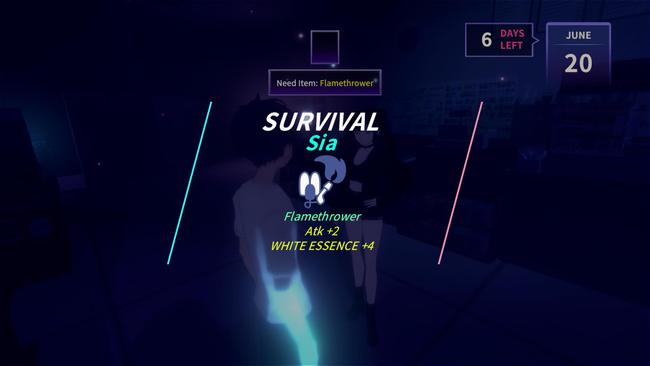
Each of the three locations is fairly small space and you only have a limited amount of time to find the requested item, if it’s even there. No matter if you’re successful or not, you’re rewarded with White Essence, the resource you need to unlock nodes in a character’s skill tree. Finding the right item will increase your HP, attack, or defense and give you more White Essence.
White Essence can be obtained by training with a character on the train too. Each character’s training session is a different minigame per character; none of them are necessarily captivating or interesting. One of them is straight up completely identical to Final Fantasy VII Remake’s squats mini-game. Doing these will raise your bond with a character as well; some relationship rank up events need their invisible bond meter to reach a certain threshold before players can trigger them.
Black Essence, on the other hand, is the resource you consume for your own character's skill tree. He'll be able to continually upgrade abilities as they unlock from progressing your relationship with others. There is an inherent imbalance on how often you accrue Black Essence versus White Essence; I found myself overloaded with Black Essence at the back half of the game, while White Essence is always a struggle to collect in vast quantities.
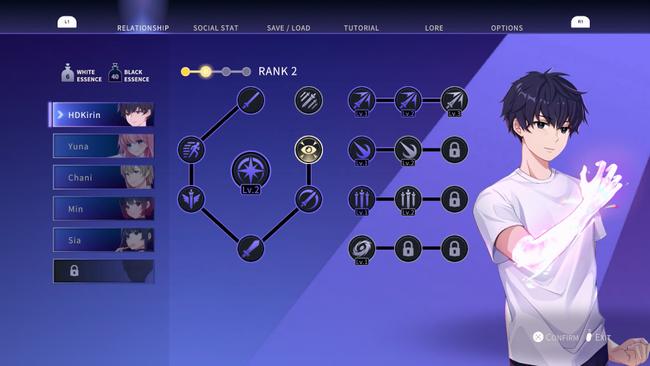
Aside from Yuna, Sia, and Min being the three female romance options, players who want to pursue a same-sex option have Yohan; he enters the picture later than the others, so keep that in mind. He’s a pretty compelling character, though the specifics dip too much into spoilers. I generally find the cast decent when Eternights leans more into the human element - which is, as I mentioned, not always the case.
Pushing through this game was a drag because navigating through the environments was visually straining for me at times. Remember the train station I mentioned earlier? It’s very dark. You could barely see where you’re going. I crossed my fingers that wouldn’t be the case for the entire game and… that was mostly the case for the entire game.
Eternights tries to inject a bit of horror into the mix. It relies a lot on darkness to deliver a sense of dread, yet it comes off more irritating rather than scary. The frequent poor lighting can sometimes obstruct enemies to the point that I didn’t know an enemy was around until I saw the flash for an incoming attack. In a few cases, I couldn’t even find the path forward since the lighting hid parts of the environment until I stumbled upon them by hugging the walls. Luckily, the main character’s glowing arm makes for a decent flashlight. Go figure.
I can understand the intent of creating a dreary atmosphere due to the circumstances. Pursuing it in this matter came at the cost of dampening my gameplay experience and that’s not a great feeling. When the only “bright” sources of lighting are fading neon signs and dimly lit tiny areas, that only makes me more annoyed, instead of fearful.
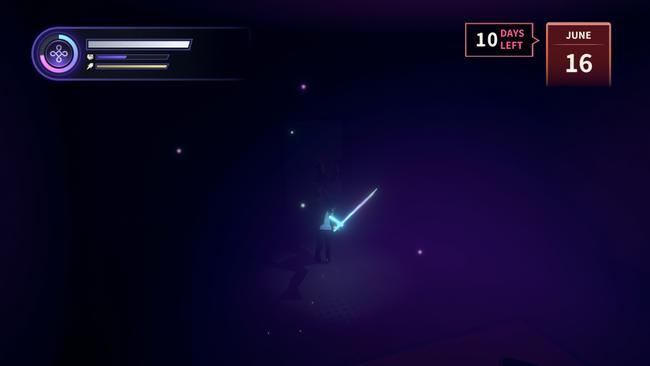
Poor universal lighting issues aside, the story dungeon layouts are okay. There are a few puzzles and gimmicks to change up the gameplay from time-to-time. They feel meaty without dragging on for too long. As for the smaller side story events that involve venturing out into battles, they all use the same city environment so they get old pretty fast.
The last thing that got on my nerves with Eternights was the bizarrely inconsistent audio mixing. Even when tweaking some of its audio sliders for longer than I probably should have, sound effects and noises in battles were cranked up compared to any other section in the game. Sometimes, a few BGM tracks would drown out audio clips. Trying to settle on audio settings to rectify its audio balance wasn’t exactly fruitful. So, as with all of my other issues with this game, I pushed through it.
Eternights is a game that had all the components for me to like, yet its execution fumbles when it matters the most. I like the 2D illustrations and the characters when the game is making an earnest effort to flesh them out meaningfully. Somehow, Eternights even ended on a note that I was mostly okay with. Despite that, the combat quickly becomes mundane. Its lighting is more obtrusive than it is atmospheric. The tonal inconsistency in its character writing undermines the stronger aspects of it. I gave Eternights a fair and honest shot with no expectations going in; I largely did not like what I played.